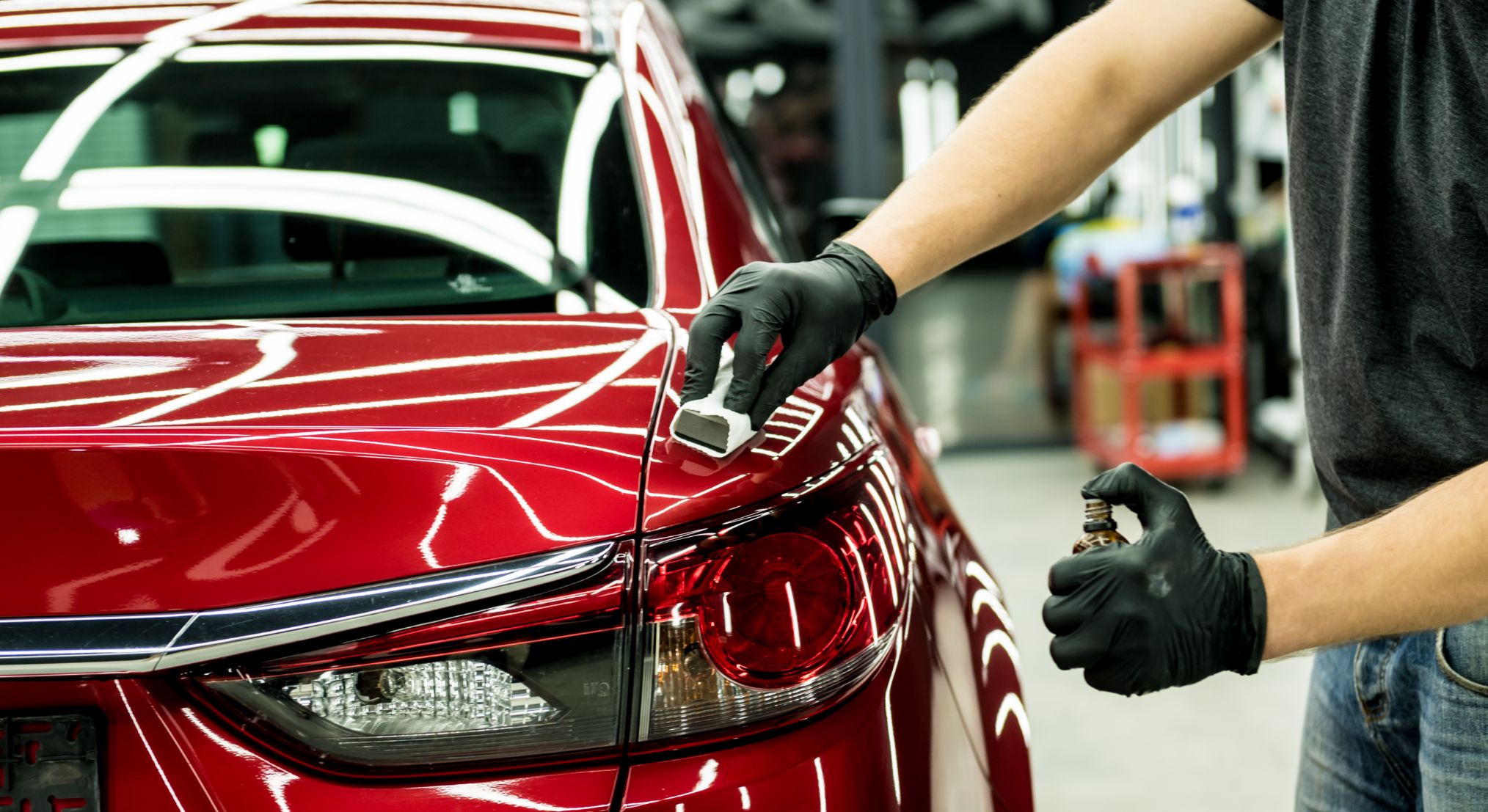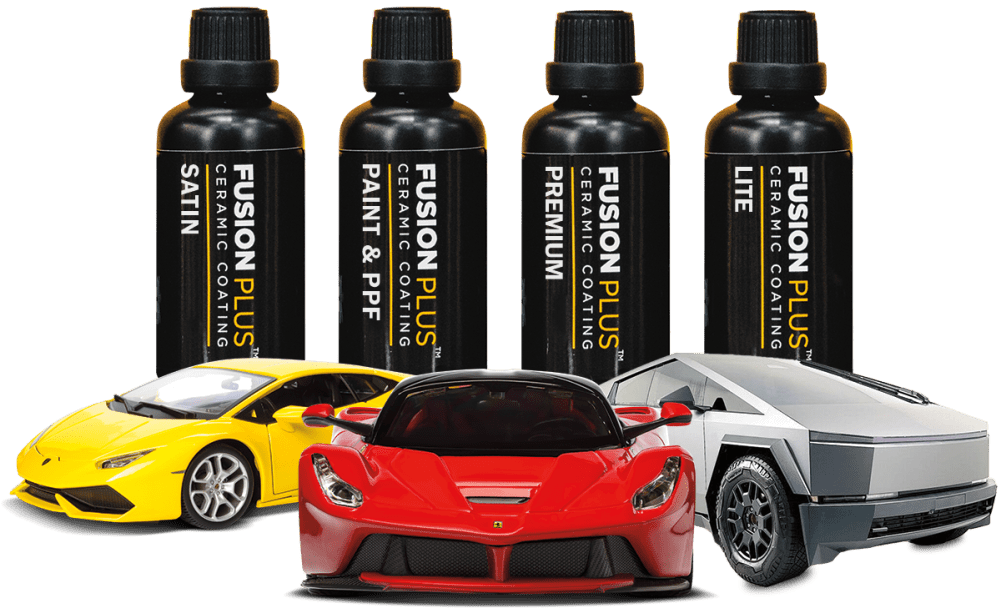How Ceramic Coating Enhances Your Vehicle's Protection and Appearance
Ceramic Layer vs. Typical Wax: Which Provides Better Long-Term Defense?
The debate between ceramic finishings and standard wax for lorry protection has garnered significant focus among vehicle fanatics and experts alike. Ceramic coatings flaunt remarkable long life and resistance to ecological factors, yet the intricacy of their application elevates questions about ease of access and practicality.
Overview of Ceramic Coating
Ceramic finishing has actually acquired substantial appeal among vehicle fanatics and detailers alike due to its innovative safety top qualities. This innovative modern technology is created to produce a long lasting, hydrophobic guard over a lorry's paint surface, substantially enhancing its resistance to environmental impurities such as dust, UV rays, and chemical discolorations. Unlike conventional wax, which gives a short-lived layer of protection, ceramic coatings bond at a molecular level with the paint, using long-lasting toughness-- frequently prolonging past 2 years with correct upkeep.
The application process entails meticulous prep work of the vehicle's surface area, consisting of cleansing and polishing to ensure ideal attachment. Once applied, the layer remedies to create a robust layer that not just adds deepness and gloss to the paint yet also simplifies upkeep. With its hydrophobic properties, ceramic coating permits water and dust to slide off more conveniently, decreasing the regularity of washes and decreasing the risk of swirl marks.
Moreover, ceramic finishings are readily available in different formulations, enabling individuals to select items tailored to their specific needs and preferences. In general, ceramic layer represents a considerable innovation in paint protection technology, delivering superior performance contrasted to traditional options.
Review of Typical Wax
Typically pertained to as a staple in auto care, wax works as a popular selection for those looking for a straightforward method to boost and safeguard their lorry's paint - ceramic coating. Automotive wax normally consists of natural components, such as carnauba, or artificial substances, made to create a safety layer on the surface of the paint. This layer not only improves the lorry's gloss and shine but also offers a barrier against environmental pollutants
The application of wax is generally straightforward, making it available for both specialists and do it yourself fanatics. It can be applied by hand or maker, allowing for flexibility in the describing procedure. When applied, wax requires a curing period, after which it solidifies to develop a safety covering. Wax is also recognized for its capacity to drive away water, promoting a beading result that helps in the avoidance of water places and deterioration.
However, while wax works for improving the visual charm of a lorry, it is vital to note that the protection it provides might necessitate a lot more frequent reapplication contrasted to different products, such as ceramic coverings. Generally, typical wax continues to be a favored choice for those focusing on ease of usage and immediate visual enhancement.
Longevity and Long Life Comparison
While both ceramic layers and traditional wax offer protective advantages for auto paint, their toughness and long life differ significantly. Standard wax, generally made from natural carnauba or artificial polymers, typically provides a protective layer that lasts about 3 to six months. This fairly brief lifespan necessitates regular reapplication to keep ideal defense.
In contrast, ceramic layers are engineered from sophisticated nanotechnology, creating a covalent bond with the paint surface. This leads to a robust, hydrophobic layer that can sustain for 2 to five years, depending on the item and ecological problems. The exceptional sturdiness of ceramic coatings is credited to their chemical framework, which provides enhanced resistance to scrapes, UV rays, and oxidation.

Defense Against Ecological Variables
Shielding a car's paint from ecological factors is vital my blog for preserving its look and worth over time. Cars are constantly subjected to a selection of aspects, including UV rays, bird droppings, tree sap, content acid rain, and road crud, all of which can jeopardize the integrity of the paintwork.
Ceramic coatings offer a durable protection versus these ecological aggressors. Unlike standard wax, which can weaken quickly under UV exposure, ceramic coatings form a long lasting, hydrophobic layer that stands up to the harmful impacts of sunshine and toxic wastes. This advanced modern technology produces a chemical bond with the vehicle's surface, using exceptional defense that lasts for years, even in severe conditions.
In contrast, ceramic layers keep their safety top qualities longer, considerably minimizing the threat of paint damage and making certain that the automobile keeps its visual allure. As a result, ceramic coverings are significantly identified as the remarkable option for long-term security versus environmental factors.
Application and Upkeep Differences
The techniques of application and succeeding maintenance for ceramic layers and traditional wax vary considerably, influencing the overall individual experience and efficiency of each product. Ceramic finishes require a more complex application procedure, generally entailing surface area preparation that consists of washing, sanitizing, and brightening the car. When the surface prepares, the ceramic coating is applied in a controlled environment, usually needing expert expertise to make sure correct treating and bonding to the go to the website paint.

While both items boost vehicle appearance, the longer-lasting defense provided by ceramic layers might warrant their first financial investment, regardless of the even more requiring application procedure. On the other hand, conventional wax continues to be a prominent option for those seeking a simpler, albeit short-term, service.

Verdict
Finally, ceramic finishings show considerable advantages over conventional wax in regards to longevity and environmental management. With a life-span prolonging two to five years and premium resistance to UV rays, dust, and chemical spots, ceramic finishes offer a more effective remedy for long-lasting car upkeep. Although the application procedure might need expert know-how, the resulting expense financial savings and minimized frequency of reapplication underscore the value of ceramic layers for those seeking ideal car protection.
The discussion in between ceramic finishes and traditional wax for car security has gathered considerable interest among automobile enthusiasts and experts alike. Unlike conventional wax, which supplies a momentary layer of security, ceramic finishes bond at a molecular degree with the paint, offering long-lasting durability-- typically extending past two years with appropriate upkeep.
While both ceramic finishings and traditional wax deal protective advantages for automotive paint, their toughness and long life differ dramatically. For automobile fanatics seeking long-term defense, ceramic coatings provide an engaging benefit over traditional wax items.
In verdict, ceramic coatings show significant advantages over typical wax in terms of resilience and environmental protection.